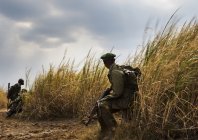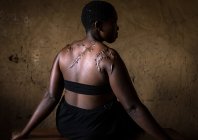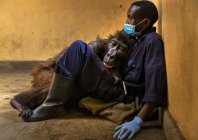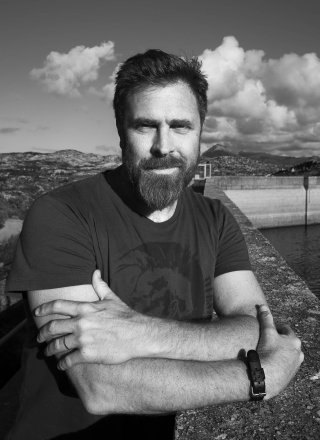
Virunga: 100 years
Brent Stirton
Virunga was Africa’s first National Park, created 100 years ago. It is a unique biosphere, larger than the state of Israel. It is primordial, mythical, and beautiful. It is a unique and fragile ark under constant threat. The park has the largest grouping of endangered mountain gorillas in the world. There are elephants, chimpanzees, lions and hippos. There are active volcanos and the Rwenzori Mountain range looms over its eastern boundary. If it can be preserved, Virunga will continue to be the greatest national park in Africa.
However, in the last 30 years, it has become one of the most difficult and dangerous places in the world of conservation.
In 1994, when the Rwandan Genocide occurred, over 4 million people fled into what was then Zaire, spilling over into Virunga in what became the world’s largest refugee camp. Among those who fled were the planners and perpetrators of the genocide, who have hidden in Virunga ever since, under the banner of the Democratic Forces for the Liberation of Rwanda (FDLR).
Preview



Today, more than half of the park is in the hands of the Rwandan-backed M23 rebels. It is the fourth time since 2008 that this group has held sway over the park, but they have never been more powerful, having made untold millions from their illegal control of mining and other assets in eastern Congo. Uganda has supported various other rebel groups and today the Ugandan Army is present in Virunga to fight the Allied Democratic Forces (ADF), a fundamentalist group of Ugandan origin that has become the ISIS representative in Sub-Saharan Africa. These conflicts have led to the death of over 5.5 million people since 1995 in what has been described as Africa’s world war.
The park headquarters have had to move multiple times over the last three years as the rebels have taken control of territory and the Congolese Army have failed to protect their sovereign land. Virunga has soldiered on and has continued to build new projects that help to preserve the park and benefit the Congolese people. Operating bases have been built in places of conflict close to local populations and these have been filled with quick reaction force rangers and capable Congolese Army troops. Key members of the population have been given panic buttons to alert the troops if there is trouble. This has brought a great deal of security to thousands of farmers, and to citizens in small towns. Simultaneously, Virunga and their European Union partners have built large, environmentally friendly, sustainable hydroelectric schemes from the park’s rivers and mountains. These now provide power and lighting to much of the region, including Goma, the largest city in eastern DRC.
The fact that the park is in an area of extreme poverty makes it much more difficult to explain why it needs to be preserved. And yet, if it can be preserved, world-class ecotourism combined with Virunga’s hydroelectric schemes could genuinely transform the region in more enlightened times.
Often the men and women who become rangers in Virunga entered their profession because there were few other job opportunities. They live spartan lives in isolated bases throughout the park. Over 240 of them have died in the line of duty and many more have been wounded in the last 15 years. They are the true peacekeepers of this region of Congo. Despite the hardships, they have remained completely loyal to their cause.
Emmanuel de Merode, a Belgian biologist, is the mild-mannered and visionary Park Warden. His courage has made him a beloved figure among the rangers. He has given everything to running Virunga and has survived multiple assassination attempts.
Virunga represents some of the most committed conservation on earth. This exhibition and its accompanying book are a modest attempt to honor this extraordinary place on its 100th anniversary. I hope it will continue to exist in another 100 years.
Brent Stirton



